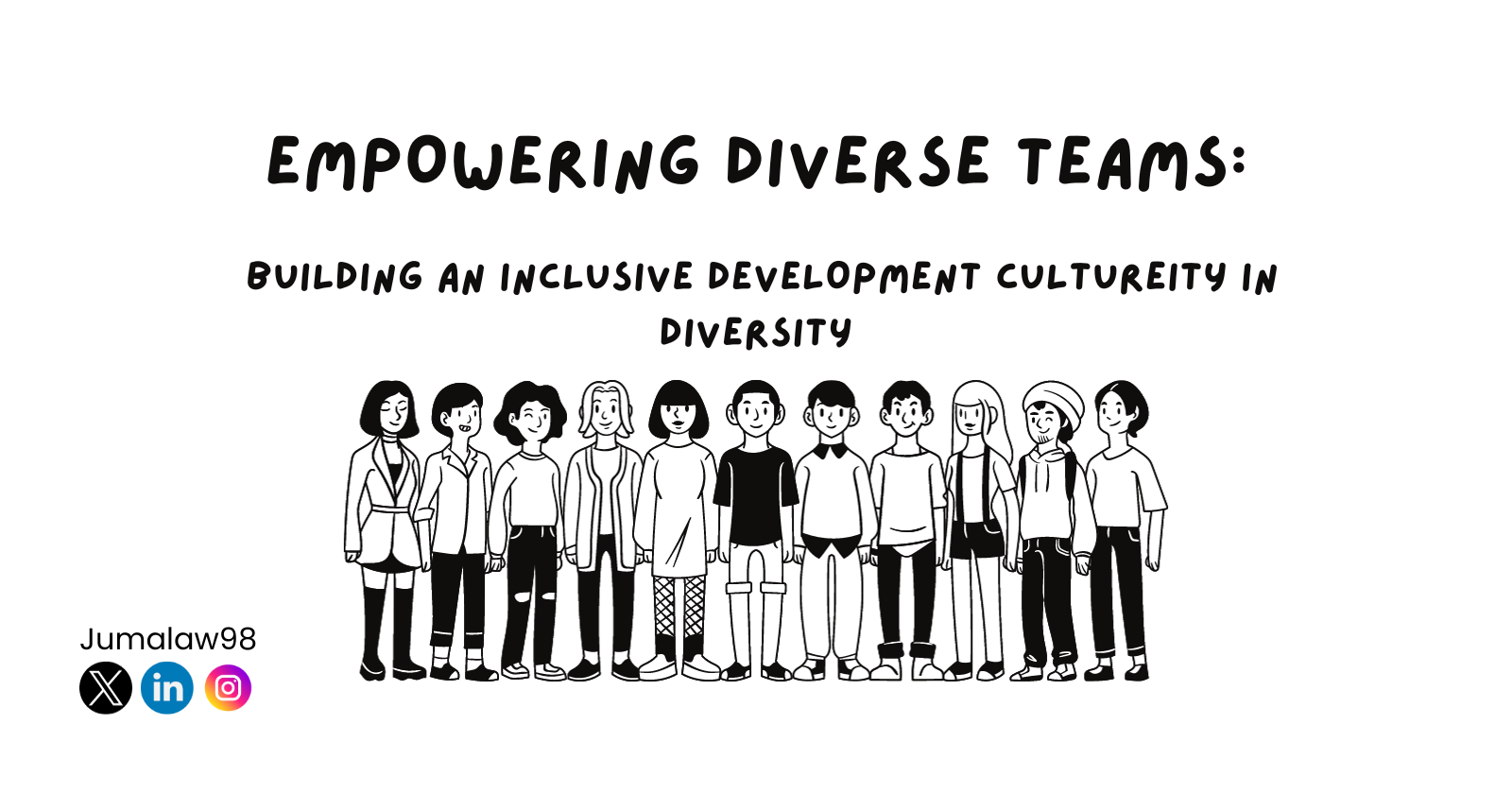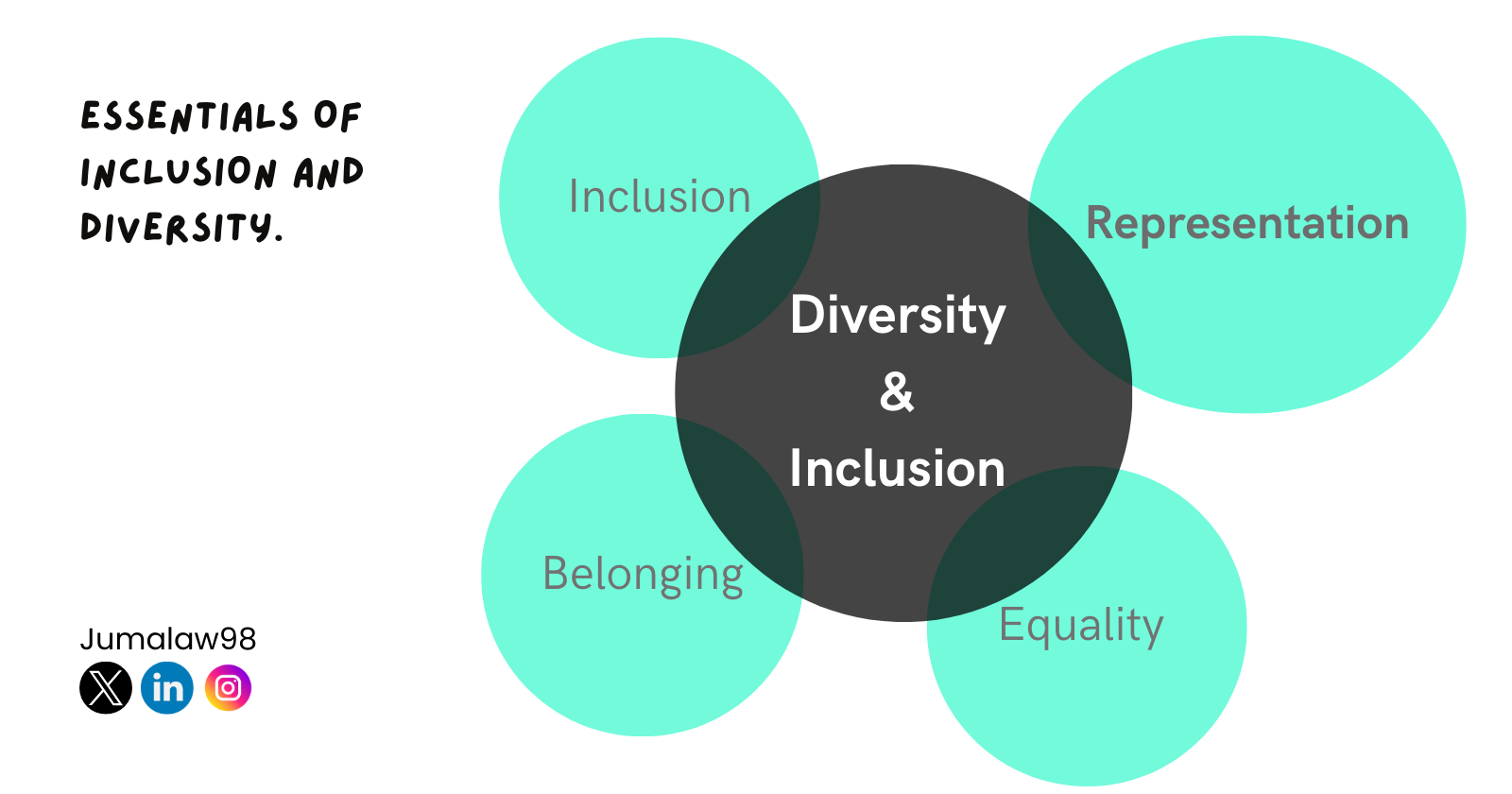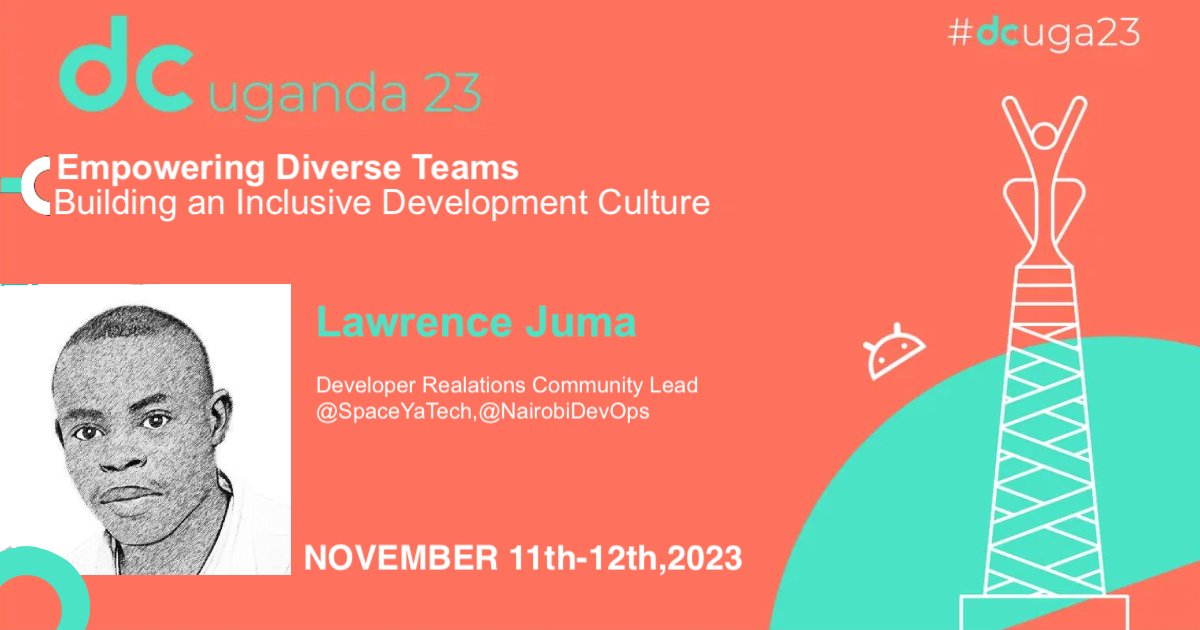Empowering Diverse Teams: Building an Inclusive Development Culture
 Lawrence Juma "Jumalaw98"
Lawrence Juma "Jumalaw98"
It is impossible to overestimate the value of diversity in development teams in the ever-changing world of innovation and technology. Teams including members with different experiences, backgrounds, and viewpoints are more creative, more adept at solving problems, and function better as a unit when they are diverse.
What is diversity?
Diversity refers to a wide range of distinctions between people, including but not limited to race, gender, age, ethnicity, cultural background, educational level, and other factors. It goes beyond the obvious distinctions to include a range of perspectives, aptitudes, and methods for addressing problems.
Why Diversity Matters
Diversity is significant because it opens doors to a wealth of varied perspectives and ideas. A diverse team can tackle more difficult problems, take into account different viewpoints, and innovate more successfully. It facilitates better decision-making and increases a team's capacity for adaptation in a quickly evolving technological environment.
Reasons for Diversity
Innovation: By blending a variety of ideas and skill sets that stimulate original thought, diverse teams contribute to the development of an innovative culture.
Market Relevance: Products and solutions are relevant to a wider audience when the diversity of individuals is better suited to meeting the needs of a varied user base.
Improved Decision-Making: Diverse teams consider a wider range of ideas, resulting in better decisions and outcomes.
Increased Adaptability: Exposure to diverse problem-solving methods makes teams more adaptable to changes and challenges.
Broader Talent Pool: Embracing diversity attracts and retains skilled individuals from various backgrounds, expanding the talent pool.
Competitive Advantage: Embracing diversity offers a competitive edge by being more innovative, meeting diverse market needs, and attracting top talent.
Better Understanding of User Needs: Diverse teams are better equipped to understand and address the needs of diverse user groups.
Improved Employee Satisfaction and Retention: Inclusive environments lead to higher job satisfaction and better retention rates.
Varied Perspectives: Different backgrounds bring different ways of seeing and solving problems, leading to more comprehensive solutions.
What is an inclusive development culture?
An inclusive development culture is one in which every team member feels valued, respected, and empowered to contribute their unique abilities. It goes above and beyond mere diversity and statistics to establish a setting that actively promotes equality of opportunity, cooperation, and open communication.
Why is an inclusive development culture important?
The establishment of an inclusive development culture is essential as it fosters a feeling of inclusion, elevates team morale, and improves overall performance. People are more willing to offer their opinions and take chances, which helps the team succeed when they feel heard and valued.
Inclusive Leadership and the Role of Leaders in Promoting Inclusivity
Leaders have a significant role in promoting inclusivity. They ought to set an exemplary example, aggressively seek out different viewpoints, and cultivate an environment that recognizes and honors the contributions of each team member. An atmosphere where everyone feels heard and encouraged is fostered by inclusive leaders.
Setting the tone for inclusion: Leaders need to communicate their commitment to inclusion and create a culture where everyone feels welcome and respected.
Challenging biases: Leaders need to be aware of their own biases and work to challenge them. They should also create an environment where others feel comfortable challenging their biases.
Promoting diversity: Leaders should promote diversity in hiring and promotion decisions. They should also create opportunities for employees from different backgrounds to connect and learn from each other.
Supporting employee development: Leaders should provide all employees with the support they need to develop their skills and careers. This includes providing access to training and development opportunities, as well as mentorship and sponsorship programs.
Building an Inclusive Culture: Steps
Here are some steps that organizations can take to build an inclusive culture:
Evaluate your existing culture: The first stage is to evaluate your current culture and pinpoint any areas that require change. Surveys, focus groups, and team member interviews can all be used to do this.
Create a diversity and inclusion strategy: Once you've identified areas for improvement, create a diversity and inclusion plan, including your goals and methods. Employee input should be sought during the development of this plan, which should be in line with your overarching corporate objectives.
Put your strategy into action: After creating your plan, it's critical to put it into action and monitor your progress. This entails establishing precise objectives and KPIs as well as routinely assessing your progress.
Engage and communicate with your team. It's critical to let everybody on your team know how committed you are to diversity and inclusion and to include them in the process of creating an inclusive workplace culture.
Training and development: Offer diversity and inclusion-related training and development to all staff members. With the support of this training, team members should gain the knowledge and skills necessary to foster an inclusive workplace as well as an appreciation for diversity.
Inclusive Policies: Establish and communicate clear policies that promote diversity and inclusion, ensuring fairness in hiring, promotions, and project assignments.
Tools for Collaboration for Better Inclusivity
Organizations may increase collaboration and inclusivity by utilizing a variety of tools and services. These tools include, among others:
Communication tools: Communication tools such as Slack, Microsoft Teams, and Zoom can help employees communicate and collaborate more effectively. These tools can also be used to create virtual meeting spaces where employees from different backgrounds can connect and learn from each other.
Project management tools: Project management tools such as Asana, Trello, and Jira can help teams stay organized and on track. These tools can also be used to create transparent and inclusive workflows where everyone has a voice.
Diversity and inclusion training: There are several diversity and inclusion training programs available online and in person. These programs can help team members understand and appreciate diversity and develop the skills they need to create an inclusive workplace.
Feedback Mechanisms: Implement systems for providing and receiving feedback, creating a culture of continuous improvement and learning.
Positive Impact of Inclusive Culture
An inclusive culture leads to higher employee satisfaction, increased innovation, and better problem-solving. It contributes to a positive company reputation, making it an employer of choice for diverse talents.
Essentials of Inclusion and Diversity
Here are some key elements of an inclusive and diverse development culture:

Representation: The workforce should be representative of the customer base and the community at large.
Equity: Everyone should have fair and equitable access to opportunities and resources.
Inclusion: Everyone should feel valued and respected, regardless of their background or identity.
Belonging: Everyone should feel like they belong to a supportive community.
Conclusion
Diversity and inclusion are essential for building high-performing teams and organizations. By creating an inclusive development culture, organizations can create a workplace where everyone feels valued and respected and where everyone has the opportunity to contribute their ideas and talents.
Subscribe to my newsletter
Read articles from Lawrence Juma "Jumalaw98" directly inside your inbox. Subscribe to the newsletter, and don't miss out.
Written by

Lawrence Juma "Jumalaw98"
Lawrence Juma "Jumalaw98"
Growth mindset in the tech field, Front-end "React Js, Vue Js", Project Manager, Digital Marketer.
